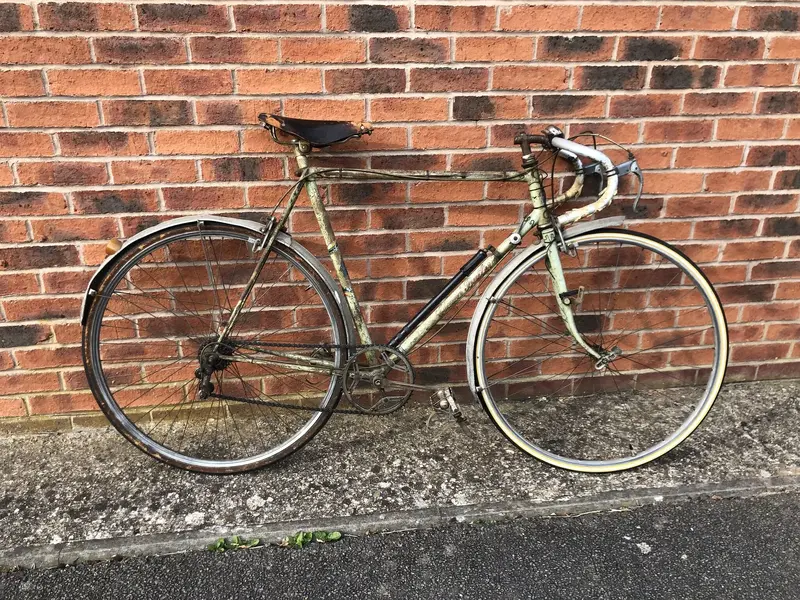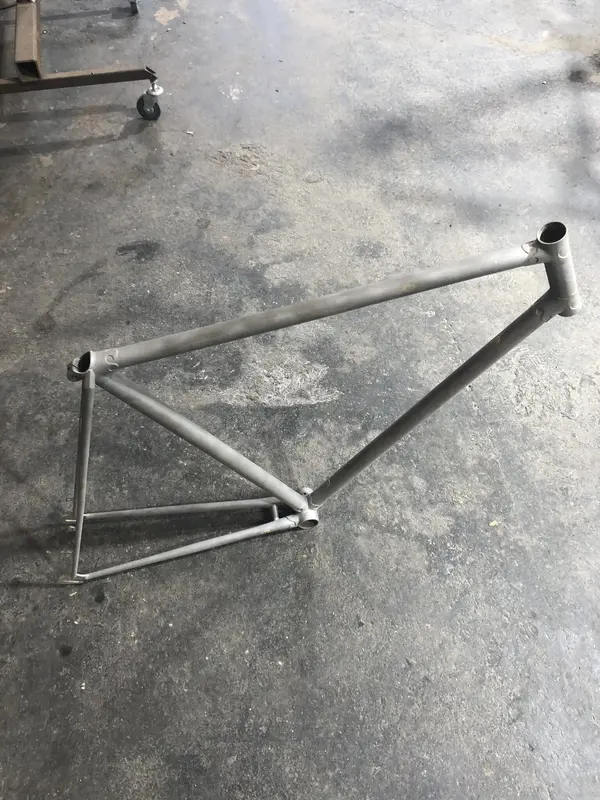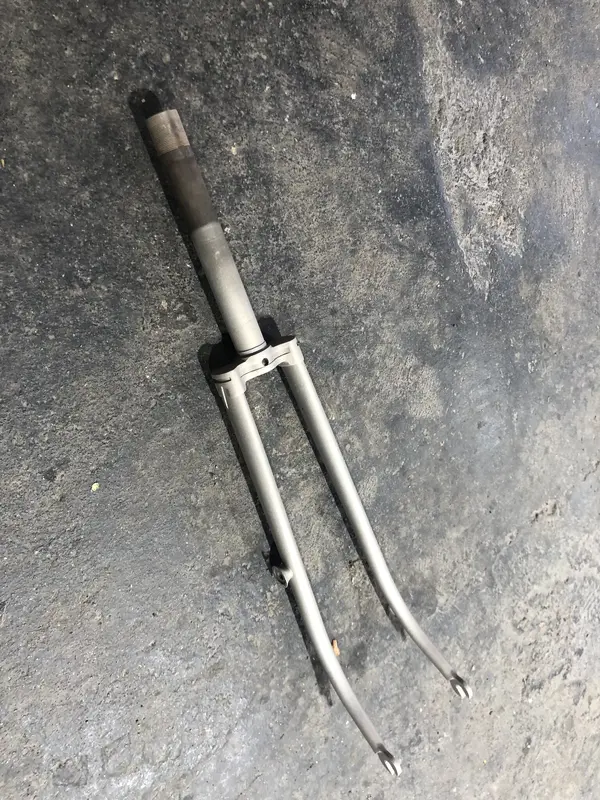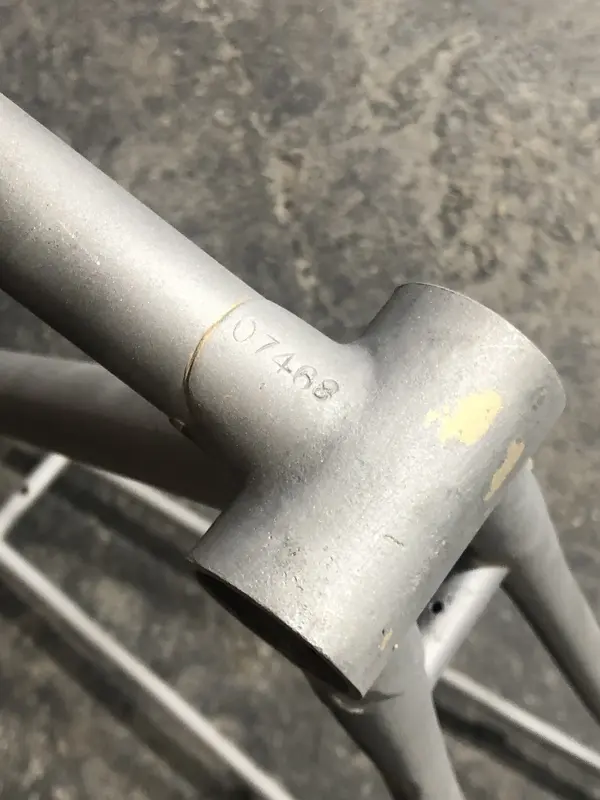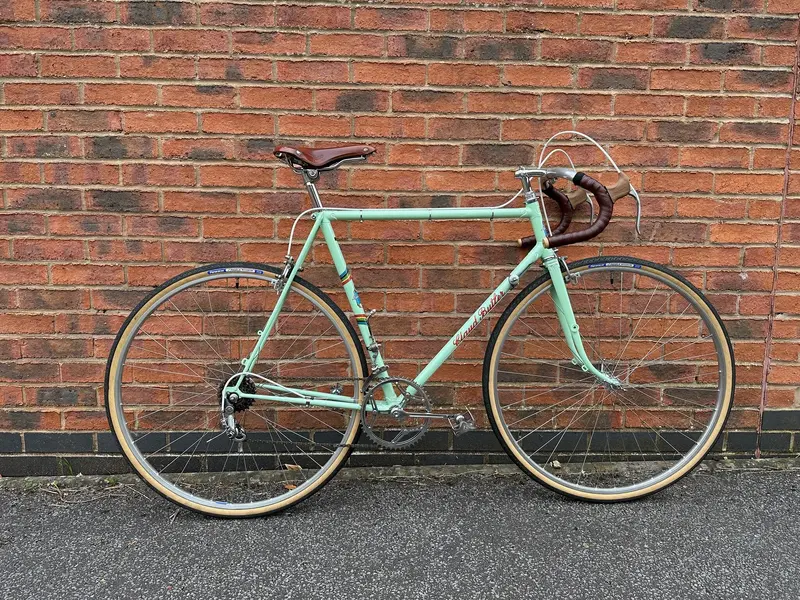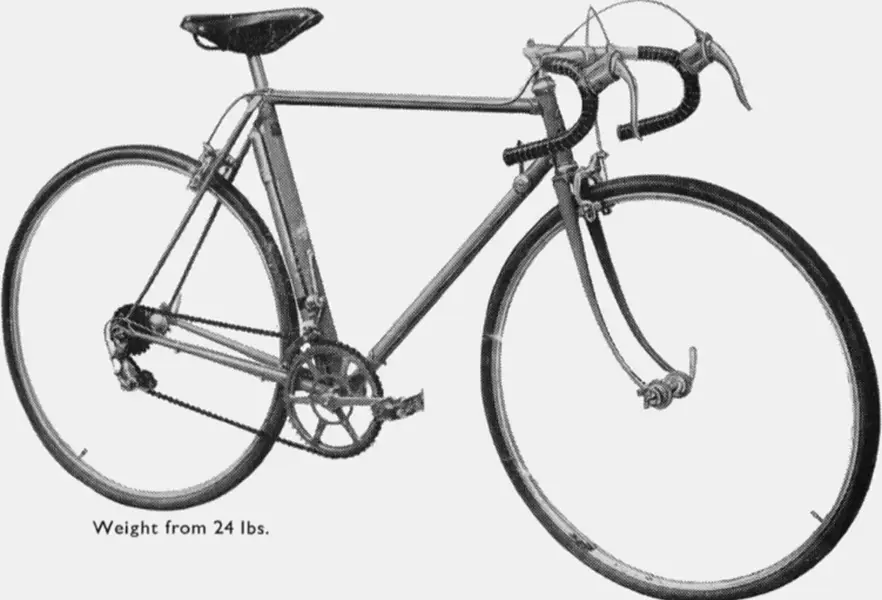Hi all,
In July 2022 I added a post to the old Claud Butler frame number identification thread regarding a bike I had retrieved from my partner’s dad’s garage. That thread seems to have disappeared since, along with all my original posts; but I thought it was time to provide an update…
Back in 2022 it was not possible to accurately identify the model or age of the bike, other than that it was bought second hand in the early 1950s, and was likely built some time in the 1940s. The bike had been used for over fifty years and was looking a little worse for wear, so rather than preserve the patina, I opted for a respray. New transfers were sourced, and I took a punt on an appropriate Reynolds tubing sticker, given the original one was long gone. Paint colour is a best estimate of what it might have originally been, given there wasn't much of it left.
After identifying the original components through all the grime, I got the brightware re-chromed, serviced what was salvageable, and replaced worn-out kit with period replacements. The final build list is as follows:
Handlebars: Stratalite Aerts
Stem: Unknown
Headset: Unknown
Brakes: GB SuperHood levers; GB Coureur callipers (I found some actual SuperHood hoods, but the rubber wasn't up to actually being used - hence the modern replacements
Bottom Bracket: Bayliss Wiley
Crankset: Gnutti cotter double chainring (46/49)
Gears: Simplex JUY51 (rear); Simplex Competition (front)
Freewheel: 1980s Shimano 5-speed (14-24). Purely on the basis that all the 1950's freewheels I found slipped when paired with the replacement chain I had to use
Pedals: Brampton B8 (toe clips not yet fitted)
Wheels: TBC - currently built up with 1970s Weinmann rims (27 x 1 1/4) laced to Milremo hubs, but also have some Dunlop Special Lightweight rims I'm lacing to Bayliss Wiley hubs at some point. The original wheels were mismatched - Alumlite rim/Defiant hub at the rear; Weinmann rim/unbranded hub at the front; and the hubs were time expired
Saddle: Brooks Swift; Seatpin: Unknown
I attach a few pictures - how it was when I got it, how the frame looked post-blasting; and how it is at the moment.
There are a few things still to iron out:
1: The front shifting is ok, but the clearances are so tight I can't stop the shifter cage from either catching on the drive-side crank, or rubbing on the chain, when in the larger chainring. For the sake of three chainring teeth difference, I can see now why it was previously removed. I've installed a narrower spacer at the rear of the cage and, although I haven't yet resorted to bending it, I'm wondering if I might be better off just removing it - any tips on alignment would be welcome. Note that I did source a Benelux shifter with a rotating bar, such that the cage moves in a linear motion rather than via a central pivot, but there wasn't enough clearance between seat tube and rear wheel to install it.
2: The rear shifting is really stiff - not sure if this is typical of this type of Simplex derailleur, or whether it needs further adjustment. Again, tips welcome.
3: The seat post slips - it originally came with a shim, but even with the bolt tight, it still slides down. I'll source a slightly wider diameter post to try - I'm not sure if there was a standard post diameter used back then - anyone know?
Other than that, it's pretty much ready to go. I'm planning to ride it from Cardiff to Brecon, as the bike was originally used to travel that way to and from university. Given the gearing, I plan to find as flat a route as possible. Although I'm wondering whether I should upgrade the drive train to something slightly more modern, like a Campagnolo Gran Sport, to give me a bit more flexibility - I'd be interested in thoughts on this - whether to persist with the Simplex kit or whether to opt for something else (and, if so, what).
It's all taken a bit longer than I'd hoped, but at least there's some progress now...
In July 2022 I added a post to the old Claud Butler frame number identification thread regarding a bike I had retrieved from my partner’s dad’s garage. That thread seems to have disappeared since, along with all my original posts; but I thought it was time to provide an update…
Back in 2022 it was not possible to accurately identify the model or age of the bike, other than that it was bought second hand in the early 1950s, and was likely built some time in the 1940s. The bike had been used for over fifty years and was looking a little worse for wear, so rather than preserve the patina, I opted for a respray. New transfers were sourced, and I took a punt on an appropriate Reynolds tubing sticker, given the original one was long gone. Paint colour is a best estimate of what it might have originally been, given there wasn't much of it left.
After identifying the original components through all the grime, I got the brightware re-chromed, serviced what was salvageable, and replaced worn-out kit with period replacements. The final build list is as follows:
Handlebars: Stratalite Aerts
Stem: Unknown
Headset: Unknown
Brakes: GB SuperHood levers; GB Coureur callipers (I found some actual SuperHood hoods, but the rubber wasn't up to actually being used - hence the modern replacements
Bottom Bracket: Bayliss Wiley
Crankset: Gnutti cotter double chainring (46/49)
Gears: Simplex JUY51 (rear); Simplex Competition (front)
Freewheel: 1980s Shimano 5-speed (14-24). Purely on the basis that all the 1950's freewheels I found slipped when paired with the replacement chain I had to use
Pedals: Brampton B8 (toe clips not yet fitted)
Wheels: TBC - currently built up with 1970s Weinmann rims (27 x 1 1/4) laced to Milremo hubs, but also have some Dunlop Special Lightweight rims I'm lacing to Bayliss Wiley hubs at some point. The original wheels were mismatched - Alumlite rim/Defiant hub at the rear; Weinmann rim/unbranded hub at the front; and the hubs were time expired
Saddle: Brooks Swift; Seatpin: Unknown
I attach a few pictures - how it was when I got it, how the frame looked post-blasting; and how it is at the moment.
There are a few things still to iron out:
1: The front shifting is ok, but the clearances are so tight I can't stop the shifter cage from either catching on the drive-side crank, or rubbing on the chain, when in the larger chainring. For the sake of three chainring teeth difference, I can see now why it was previously removed. I've installed a narrower spacer at the rear of the cage and, although I haven't yet resorted to bending it, I'm wondering if I might be better off just removing it - any tips on alignment would be welcome. Note that I did source a Benelux shifter with a rotating bar, such that the cage moves in a linear motion rather than via a central pivot, but there wasn't enough clearance between seat tube and rear wheel to install it.
2: The rear shifting is really stiff - not sure if this is typical of this type of Simplex derailleur, or whether it needs further adjustment. Again, tips welcome.
3: The seat post slips - it originally came with a shim, but even with the bolt tight, it still slides down. I'll source a slightly wider diameter post to try - I'm not sure if there was a standard post diameter used back then - anyone know?
Other than that, it's pretty much ready to go. I'm planning to ride it from Cardiff to Brecon, as the bike was originally used to travel that way to and from university. Given the gearing, I plan to find as flat a route as possible. Although I'm wondering whether I should upgrade the drive train to something slightly more modern, like a Campagnolo Gran Sport, to give me a bit more flexibility - I'd be interested in thoughts on this - whether to persist with the Simplex kit or whether to opt for something else (and, if so, what).
It's all taken a bit longer than I'd hoped, but at least there's some progress now...
